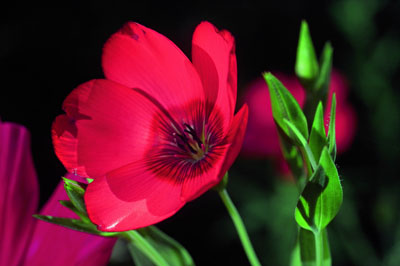|
|
Digital Photography Essentials #003"Color Separation"
note by
Dick Merrill (Foveon)
|
There are four common ways to do color detection with electronic image capture systems: TIME SEQUENTIAL COLOR the same photodetector is used three times in sequence to capture a red, green, and blue image. Used today in some studio camera setups for still life scenes, and some scanners make use of this principle as well. Used in the early days of film photography to get some of the first quality color photographs, see example below. Unable to capture motion, and even still life images can have some form of subtle motion.
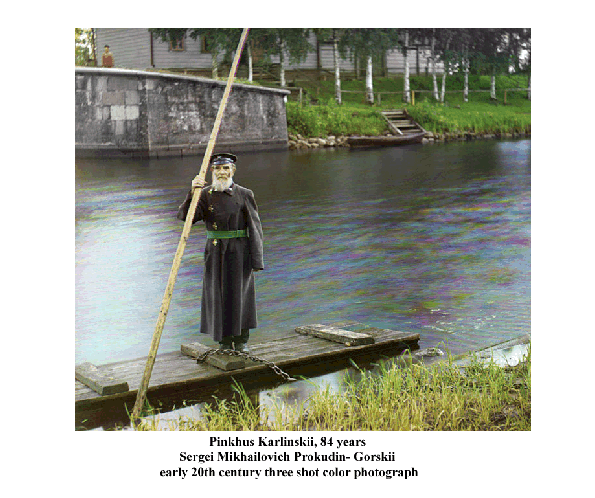
OPTICAL COLOR SEPARATION Refractive or reflective optics are used to create separate red, green and blue optical paths that are exposed on separate image sensors. Used in some high end video cameras, an example follows. Optics are expensive and have more constraints than for a single optical path.

3) LATERAL COLOR FILTER. An array of transparent color filters is arranged over the photodetector array, so that different photodetectors sample different colors, as well as different spatial locations. The most common form of color detector used in consumer electronic imagers today, often called "Bayer pattern" after its inventor (see US patent number 3,971,065). The normal output file for this type of pixel interpolates color values for all the physical photosites, requiring many assumptions about the local image characteristics, as well as complex calculations.
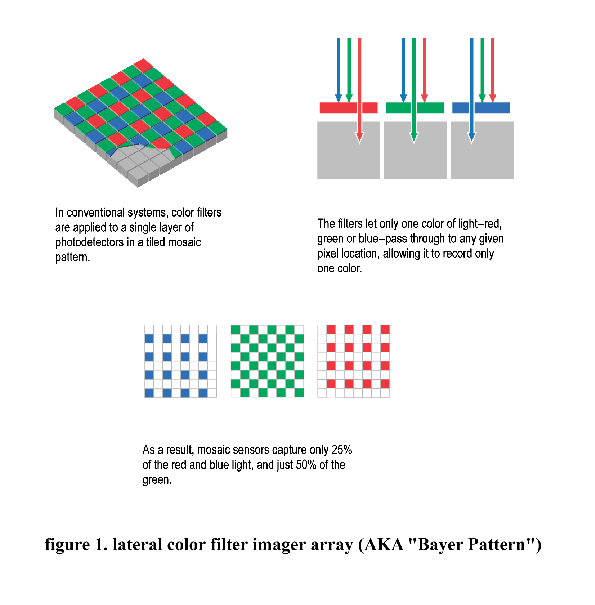 Advantages of lateral color filter sensors:
Disadvantages of the lateral color filter sensor:
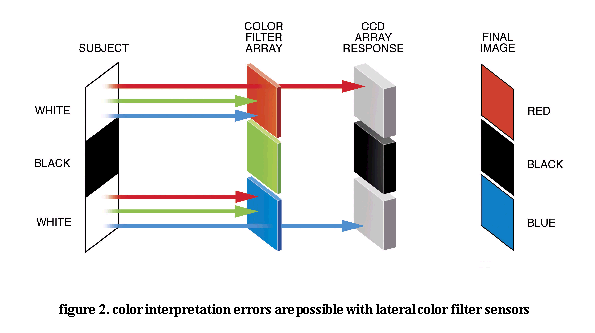
Interpretation errors such as those illustrated in Figure 2 can cause distracting color Moire patterns in some images. To minimize these Moire patterns, some digital cameras have "Anti Aliasing" filters in the optical path to blur out the high spatial frequency patterns (see the discussion of sampling in Digital Camera Tech Notes #2 Pixel Size) , and thereby reduce Moire patterns. This approach is illustrated in figure 3 below.
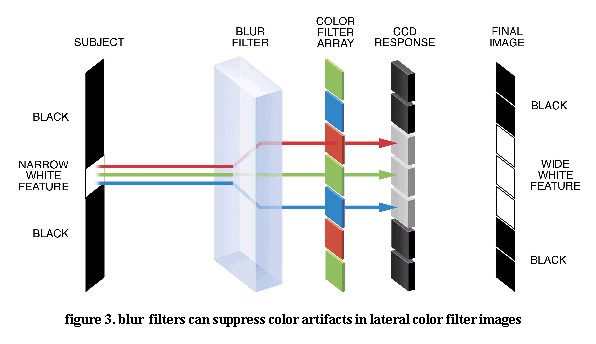
Unfortunately, blurring of color information to suppress the color artifacts reduces image sharpness as well. Figure 4 below shows the trade-off between blurring and Moire patterns in a typical lateral color filter image sensor. As the aperture size is reduced (increasing f#) diffraction blurring is increased, reducing the color Moire artifact.
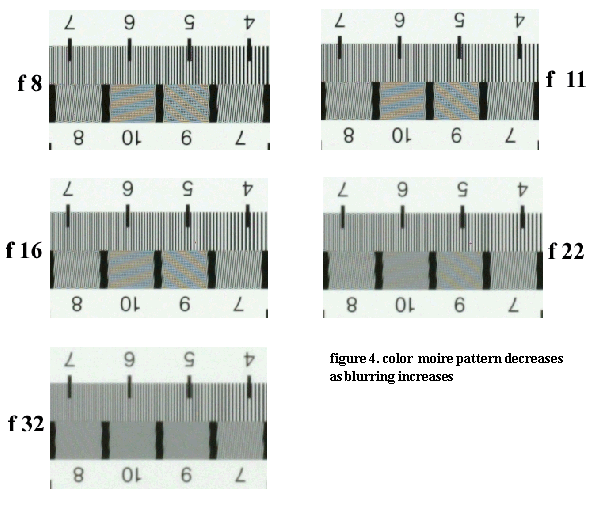
VERTICAL COLOR FILTER Each photosite measures all three colors, using a vertically stacked arrangement of color filters and detectors. Used in color film for over 70 years, and is also possible to implement in electronic image sensors, as shown in figure 5. 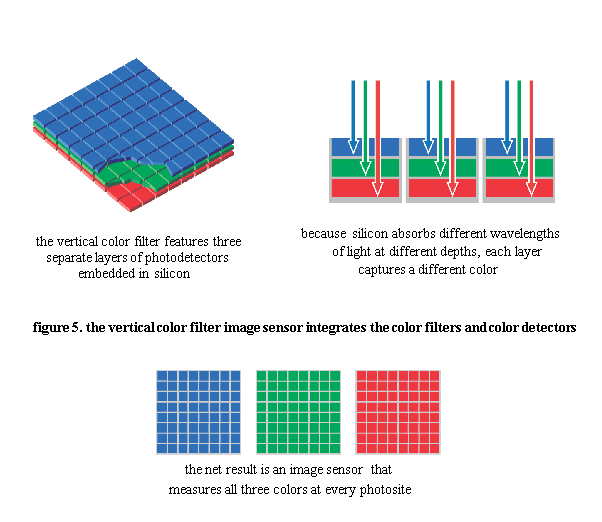
Advantages of vertical color filter sensors:
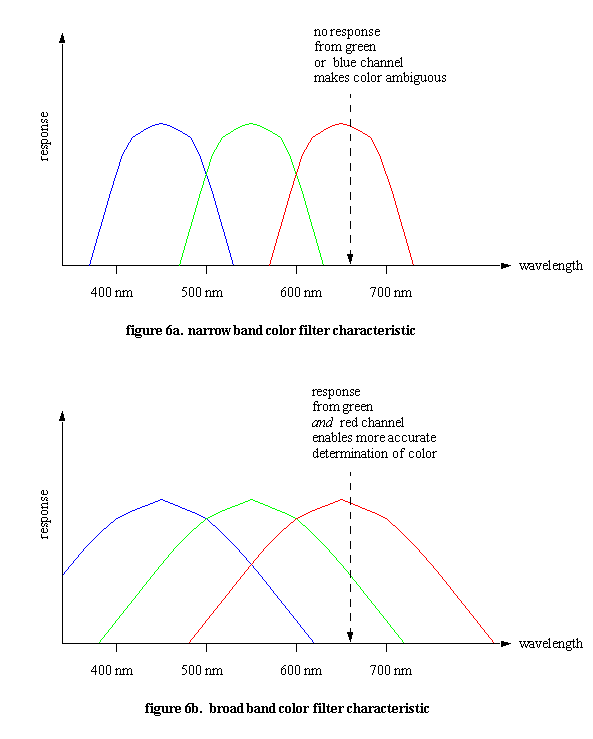
Photographic subjects in the real world are made up of myriad light reflecting (or emitting) objects each of which can have a different color. Lateral color filter sensors can have difficulty detecting abrupt color transitions, as described earlier in this article. To prevent more noticeable color errors, uncertainty in the area of color edges is usually rendered as a neutral grey or some blend of surrounding colors. This effect is shown in figure 7a below.
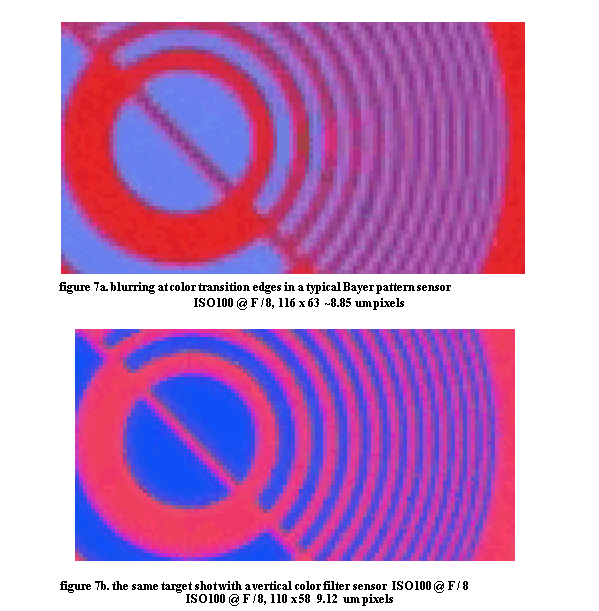
As seen in figure 7b, the same color transitions are rendered with less use of neutral color when the vertical color filter sensor is used, so the resulting image has more of the real color that was present. In scenes of objects with many color transitions, such as grains of sand on a beach or tree leaves, this reduction of incorrect colors near edges can amount to a significant amount of the scene content, enough to cause a noticeable difference in subjective color perception for the image. CONCLUSION We have described four basically different techniques for doing color separation in digital cameras, each of which has advantages and disadvantages which make it more, or less, suitable for different applications. Of these techniques, only the single chip lateral or vertical color filter method is practical for consumer cameras. The vertical color filter has the basic physics advantage of capturing more information per unit sensor area than the lateral color filter sensor. But the lateral color filter sensor has less overhead, in cases where having all color information in each photosite available does not contribute to image quality. In the ultimate (future) camera design with diffraction limited resolution, and photon capture cross section limited signal to noise, then the vertical color filter will have an advantage.
|
| For Comments post in our News Group |





